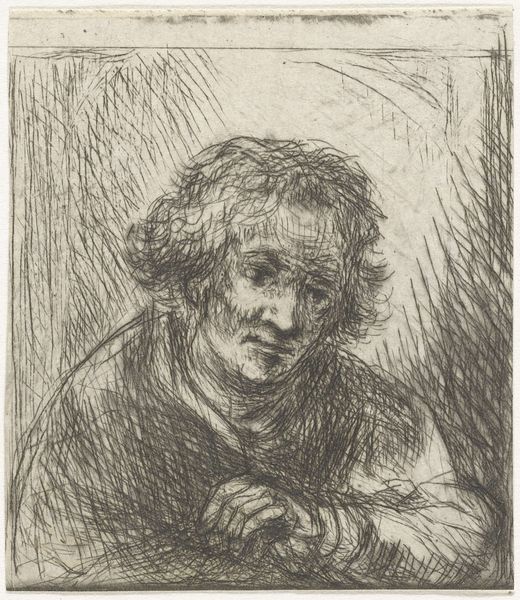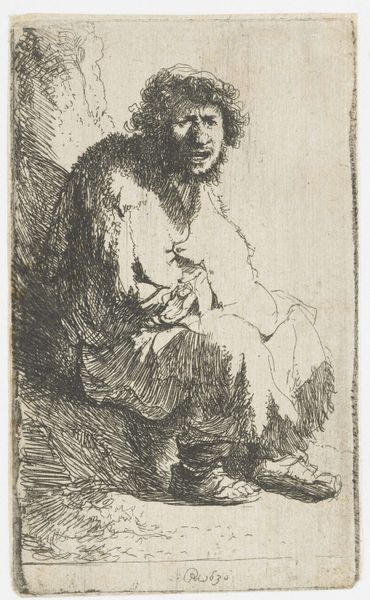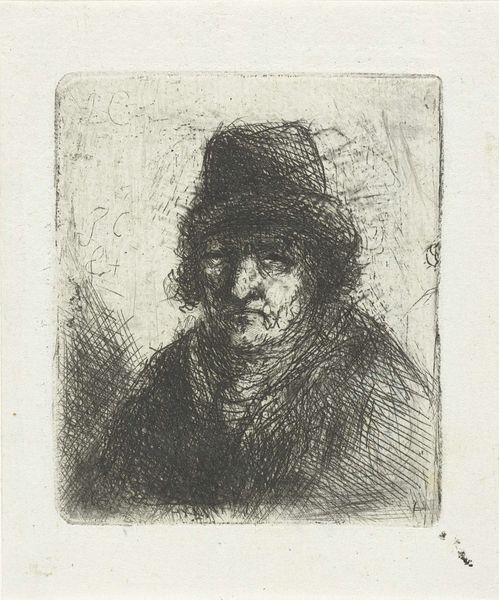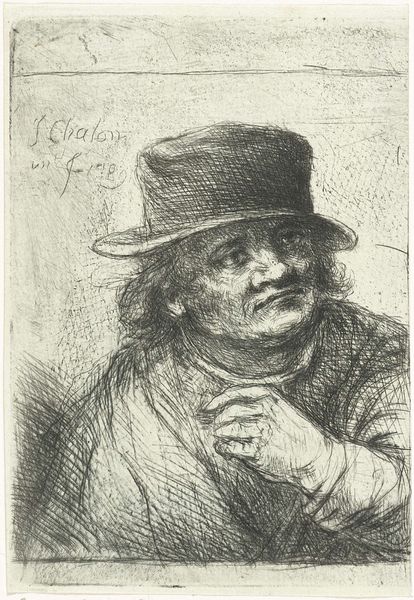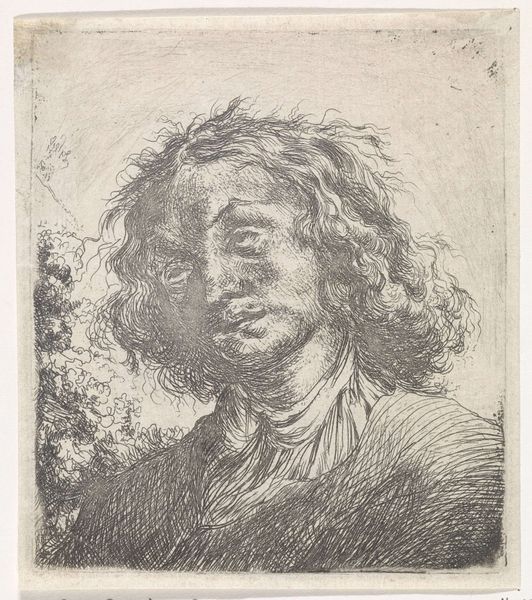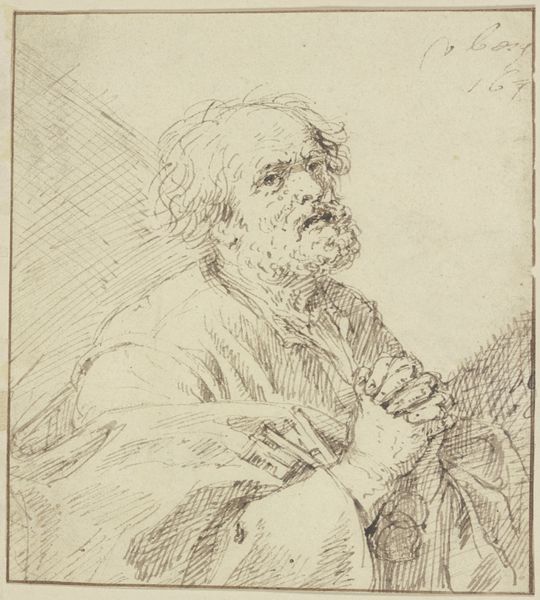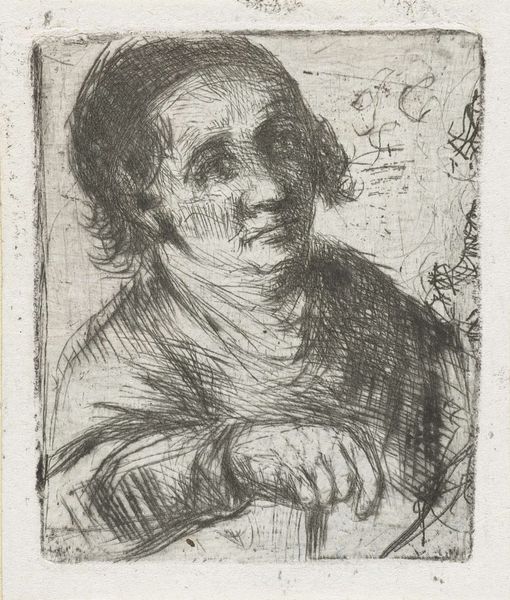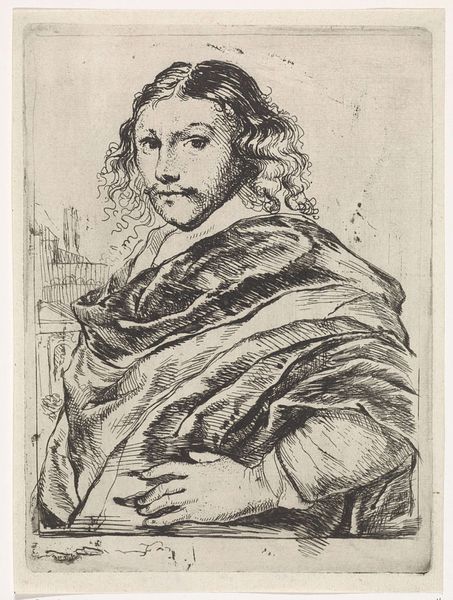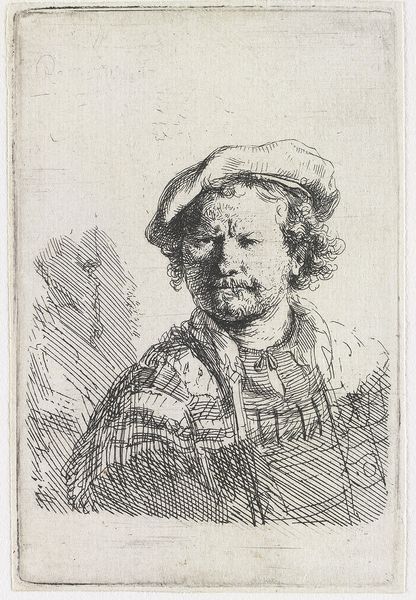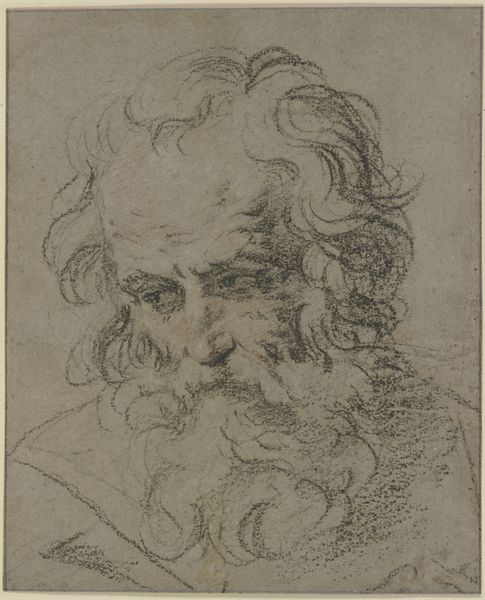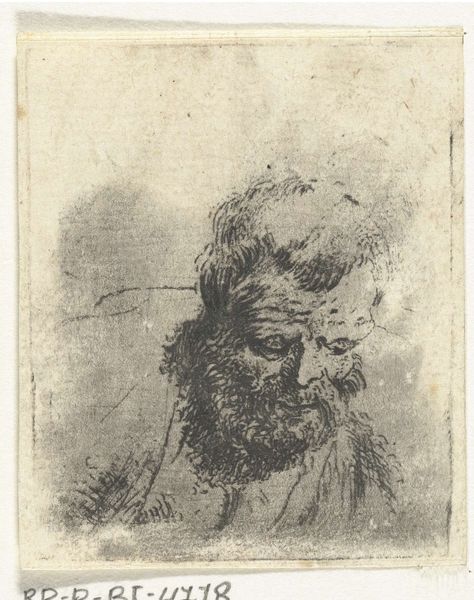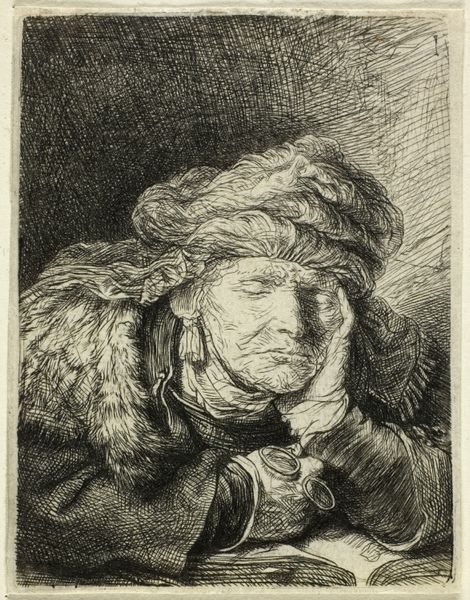
print, etching
#
portrait
#
ink drawing
# print
#
etching
#
realism
Dimensions: height 66 mm, width 56 mm
Copyright: Rijks Museum: Open Domain
Editor: This is Jan Chalon's "Volwassen man," or "Adult Man," an etching made sometime between 1748 and 1795. I'm immediately drawn to the raw texture of the lines and how they seem to capture not just a likeness, but also the weight of experience etched on this man's face. What do you see in this piece, with its striking realism? Curator: I see a tapestry of time, woven into the very fabric of the image. Chalon doesn't just present us with a portrait; he offers a glimpse into the symbolic landscape of aging, mortality, and the indelible marks life leaves behind. The subject's turban-like head covering, what significance might that have had in the period? Editor: I hadn’t considered that – it makes me wonder about social status, perhaps? Curator: Precisely. Turbans carried diverse symbolic weight. And observe how the web of lines around his eyes and mouth—almost hieroglyphic—suggest hidden narratives. It speaks to a kind of psychological unveiling through symbolic marks, like the visual echoes of memories. Doesn't the tight hold he has of his clothing also indicate some discomfort, either physically or perhaps a reluctance to be observed? Editor: That's insightful, I hadn’t thought about his posture adding to the story. Now I see more vulnerability in his expression. Curator: And vulnerability humanizes, providing an enduring psychological landscape, no? An Iconographer sees layers of stories inscribed onto the visible surface, inviting a richer, more profound interpretation beyond mere representation. Editor: This has really deepened my understanding; I now see the portrait as so much more than a snapshot in time. Curator: Indeed. Hopefully this enriches our engagement with portraits generally; the visual symbols offer continuity and profound stories through history.
Comments
No comments
Be the first to comment and join the conversation on the ultimate creative platform.


